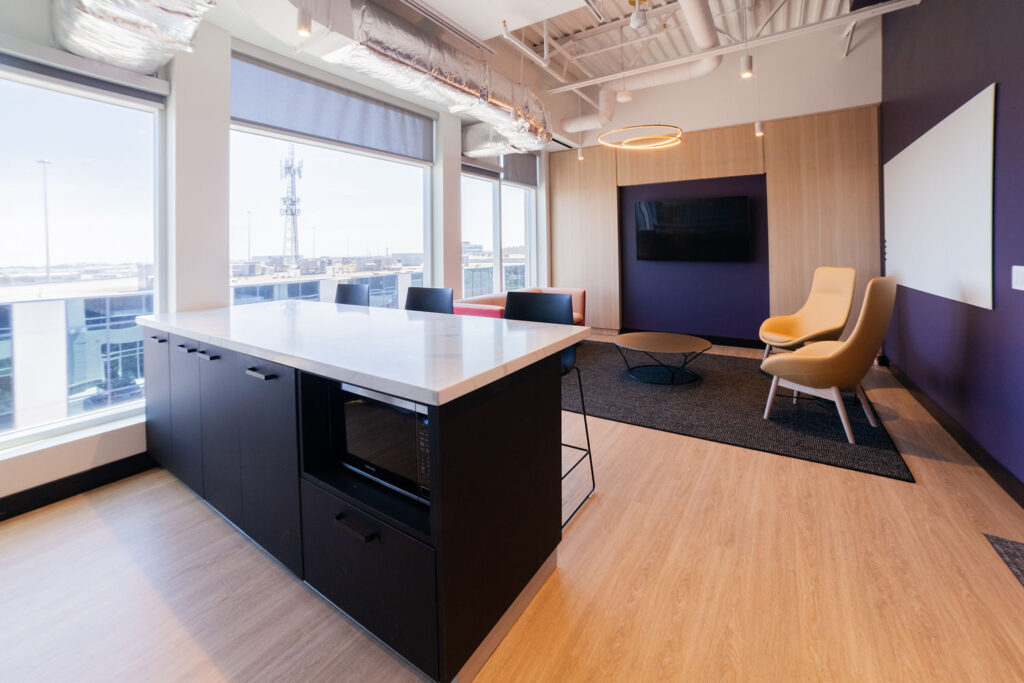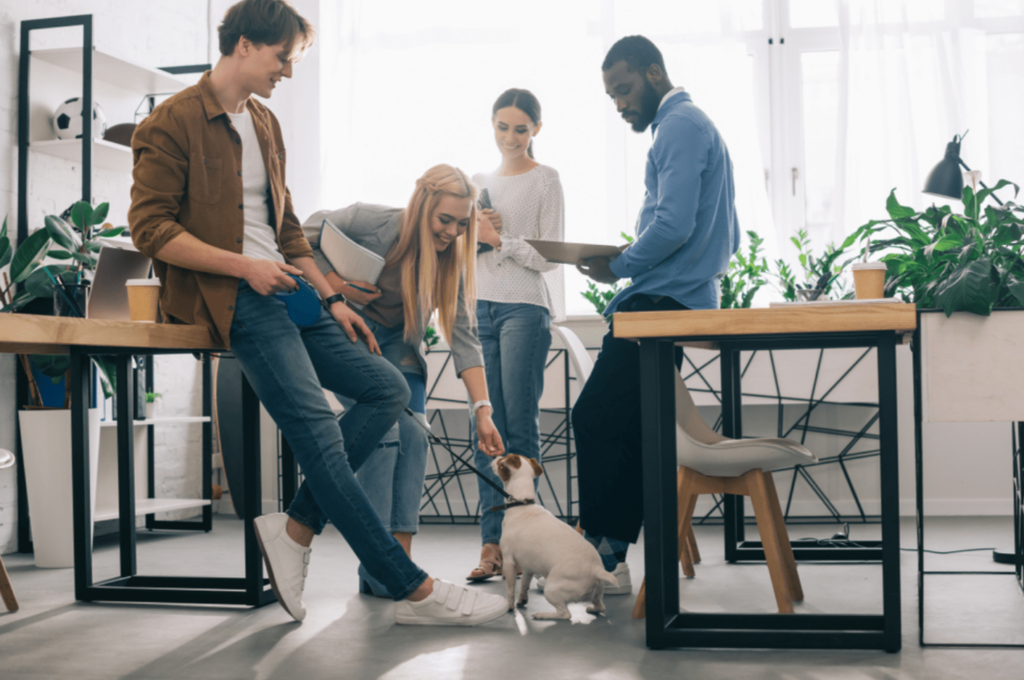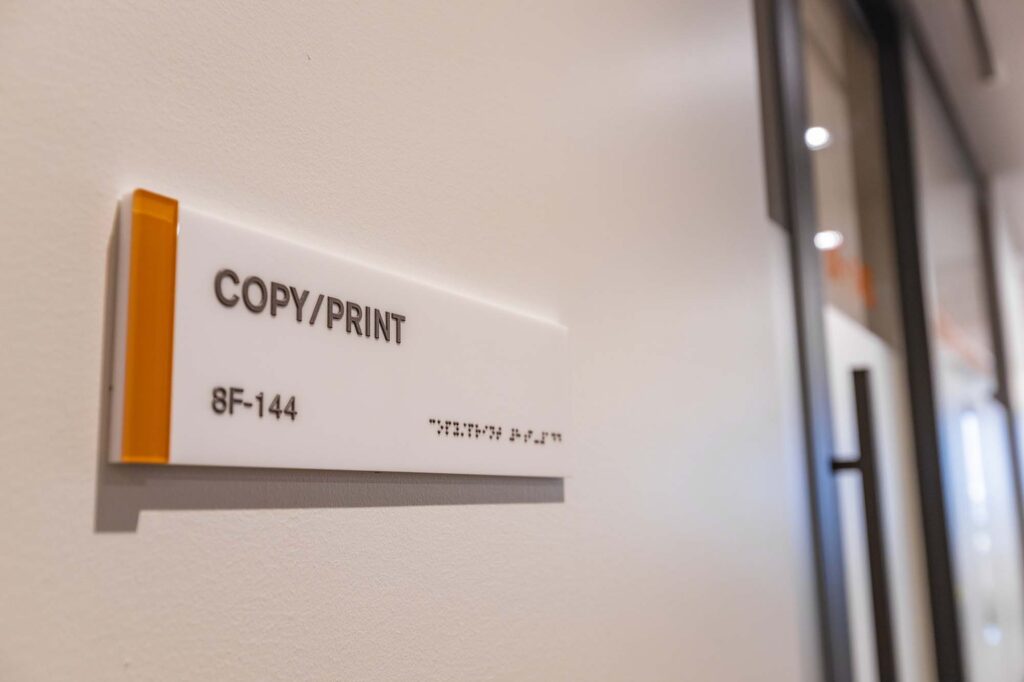What is a “trend”? As defined by the Oxford Dictionary, a trend is “A general direction in which something is developing or changing”. In design, this is exemplified by the ever-growing capabilities of creative thinkers and the people they collaborate with, within their respective industries. Just as fashion is ever-evolving, so too is office design to meet the needs and capabilities of its industry. However the difference between these two design industries, while comparing trend-setting influences, is distinctive. One can argue that while fashion industries can be influenced by subjective impressions or content, office design has evolved from a similar subjective influence into logistic influenced design. Twenty years ago, office designers would ask, “How many people do we need to fit in this office?”. Over time, design questions have slowly adapted to consider what functions and activities would be performed in these spaces, and how business owners can make spaces more effective and efficient.
Fast forward to today, and the questions being asked around workspace design are all about the user experience. Questions like: “What experience do we envision for our employees and customers when they come to our space?”, or “How do we make them feel welcome, enriched, and engaged while trying to keep the space multi-functional, and accommodating for all?” The objective for an experienced designer is to curate human-centric spaces that uniquely reflect the DNA of a company. Tailoring exceptional and memorable experiences for the user is at the center of today’s definition of “good office design”. As we begin a new year, here are 3 trends we can look forward to seeing in good office design execution:
1. FUNCTIONAL OFFICE CAFES
One trend to look forward to is providing a rich and memorable experience for users. A great example of this is for firms to incorporate a functional café in their workspaces, as I wrote about last month in the article: Workplaces That Work: 5 Tips For Designing A Functional Office Café. From making Wi-Fi available throughout the office, to offering agile and flexible furniture options as well as healthy snack foods, small steps a firm takes can go a long way to make employees and customers feel comfortable in a workspace that is not their own.
2. MOVE BEYOND THE OPEN-CONCEPT PLAN
Another trend the office design industry that has been manifesting over the past year has been the shift to move beyond the open-concept plan. Well-being in the workplace today is supported by choice within one’s work environment. Challenging businesses to evolve their workspace to be an activity-based environment, with a variety of open-areas (for collaberative work) and focus-areas (for heads-down work). When a company tailors their workspace to the activities taking place within it, one can quickly see that not all open plans are created equally. In fact, many are often misunderstood. For those that are not familiar with the term, activity-based working is best described as a environment where employees have the choice of multiple workspaces within their office at any given time. Empowering them with the ability to choose where they want to work based on what they need from their workspace to facilitate for the task at hand (e.g collaborative work, versus individual heads-down work). This choice results in higher levels of employee engagement and productivity at every level of the company, and we at Mayhew pride in our ability to adapt our client’s work environments to this up-and-coming trend. Have a look at how we were able to help GlaxcoSmithKline move to an activity-based workspace by incorporating an 8:10 ratio of desks, no assigned seating, and no individual offices in Mississauga, Ontario.
Some businesses have moved to providing workspaces that are subdivided into “neighborhoods” for their workforce, resulting in assigned work areas for groups or departments, but unassigned for individuals. This allows employees to have choice (this word keeps coming up!), to find a sense of belonging in one, or multiple spaces throughout the office. These types of spaces can include communal areas for socializing, bean bag chairs for one to relax in solitude or lounge areas that can accommodate many. Every day is different, so it only makes sense that companies offer different work areas to meet the needs of the task at hand. Moreover, having a variety of workspace options exposes teams different types of visual and sensory stimuli. Which in turn, has a positively influence their well-being and the overall company culture.
Some teams have a need for an open plan concept, while others get more done in environments that provide the resources and people they need right at their fingertips. At Mayhew, we get a number of requests for “agile” workspaces that are designed to support cross-functional, project-based teams. These teams often work in close proximity to each other in order to streamline space according to their needs. However no two businesses are going to be the same, just as no two teams are likely to have the same needs; some of these agile teams work together for weeks, others for years. But as a business owner or executive leader, it is important to get to know your teams and build their work environments to their specific strengths and efficiencies. With the right tools and functionality baked into your team’s workspace flow, businesses will be able to maximize their investment in technology, process, and people by leveraging your investment in space. Combining smart workspace planning with the right work environment and furniture solutions was a key consideration with our project with Axonify. Have a look at how our creative process contributes to their business results.
3. BIOPHILIA HYPOTHESIS
What is biophilia? Britannica.com tells us that biophilia hypothesis is a theory that humans possess an innate tendency to seek connections with nature and other forms of life. I do think there is something to this, and so do many others as it is a burgeoning trend in office design for 2019! Let’s face it: for those who work in an office environment, we spend 40 hours (if not more) at a desk indoors, cut off from nature. If we must spend most of our waking hours during the week indoors, one of the hottest trends in office design in 2019 will be all about bringing the outdoors in, to lessen the separation we feel when we step into the office in the morning (sometimes when it is still dark!) and do not emerge from those same doors until dusk. Studies have shown that incorporating biophilia into office design can increase productivity, happiness, and reduce absenteeism – all factors that directly impact a company’s performance. Incorporating greenery indoors can come in many forms: from floor plants, to hanging philodendron, to orchids and tillandsia on a desk. Biophilia ties into the notion of healthy mind, healthy – and productive – company. Moreover, some additional side benefits of biophilic elements in a workspace are the improvement of air quality and help with noise reduction.
Office design trends are constantly changing in this fast-paced and competitive marketplace. If you are considering an office redesign to incorporate new trends for 2019, contact us for a FREE workplace assessment (valued at $2,000.00).
The interior designers at Mayhew can help optimize your workplace based on your organization’s needs, timeline and budget. You’ll love the results, and so will your team!


